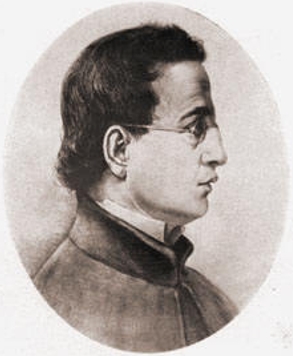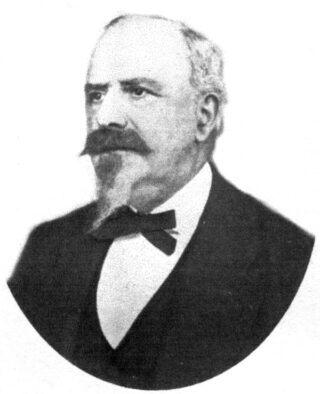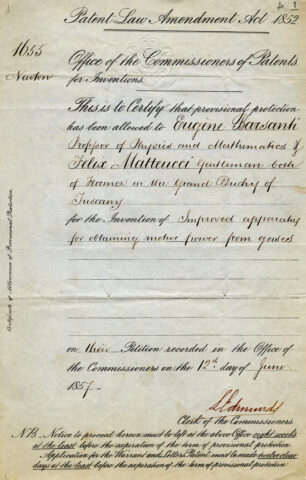Do you know that the invention of the first internal combustion engine was presented in Florence?
Eugenio Barsanti (neé Nicolò) was a teacher of mathematics and physics at the College of San Michele in Volterra. In 1841 he illustrated to his students an experiment about the explosion of an incendiary mixture of air and hydrogen (using a Volta’s electric-phlogopneumatic pistol of his construction); at that time he had the idea to exploit the rapid expansion of the gas to raise a piston.
On July 17 1838 Barsanti, who later became a catholic priest belonging to the Order of Poor Clerics Regular of the Mother of God of the Pious Schools, went to Florence with Father Bottari and completed his novitiate at Calasanzio’s Institute “Il Pellegrino” on via Bolognese, where he put on the habit prescribed by Joseph Calasanz for his congregation, and changed his name to Eugenio dell’Addolorata.
He was appointed lecturer of mechanics and hydraulics at the Ximenian Observatory of Florence in 1852, and then he was able to develop his idea of the internal combustion engine. In that period he met Felice Matteucci, who frequented the observatory, and began to collaborate with him.
A manuscript conserved at the Ximenian Observatory reports Barsanti’s idea of generating motive force from the explosion of a gaseous mixture.
“Il Padre Eugenio Barsanti aveva ripetutamente osservato che l’apparecchio subiva, al momento dell’esplosione, un riscaldamento tanto maggiore quanto piu fortemente era calcato il turacciolo e che questo riscaldamento giungeva al maximum allorche il turacciolo stesso veniva cosi fortemente calcato che l’esplosione della mescolanza detonante non valeva a cacciarlo via. Da questa osservazione deduceva che la forza esplosiva dei miscugli composti di idrogeno e di aria non era cosi violenta come l’avrebbe fatto supporre il rumore che si ode quando il turacciolo viene slanciato, e che si poteva regolarne gli effetti dinamici obbligandolo a trasformarsi in parte o anche totalmente in calorico.”
(“Father Eugenio Barsanti had repeatedly noticed that the instrument would heat up at the moment of the explosion and this heat was directly proportional to how much the cork was pressed down and that the heat would reach its maximum when the cork was pressed down so much that the explosion of the mixture could not expel it. From this observation he deduced that the explosive force of the mixture of hydrogen and air was not as violent as the noise it produced would make it seem, and that the dynamic effects could be regulated compelling them to be transformed, partially or totally into heat.”)
Barsanti and Matteucci submitted their invention on June 4 1853 with a letter to the secretary of the Accademia dei Georgofili in Florence, that was read on a regular meeting of the Accademia on the following day, establishing the priority of their invention.
On that occasion they wrote:
“Ill.mo Signore
Desiderando noi sottoscritti di fissare in modo autentico la data di alcuni nostri esperimenti sui quali per ora ci giova mantenere il segreto, abbiamo immaginato di depositare presso codesta illustre Accademia un Rapporto sigillato nel quale tali esperimenti sono descritti.
Nella fiducia di ottenere dalla gentilezza di V.S. Ill.ma che possa aver luogo questo deposito con tutte le opportune formalità, ci permettiamo dirigerle il rammentato Rapporto, pregandola a favorircene un cortese riscontro.
Frattanto ci procuriamo l’onore di segnarciFirenze li 4. Giugno 1853
Umiliss. Dev. Servitori
Eugenio Barsanti D.S.P.
Felice Matteucci”
(“Dear Sir
Wishing us, the undersigned, to authentically fix the date of some of our experiments on which we wish to maintain secrecy for the moment, we have decided to deposit with your illustrious Academy a sealed Report in which these experiments are described.
In the confidence of obtaining the kindness of Your Excellency to allow this deposit to take place with all the appropriate formalities, we take the liberty of sending you the aforementioned Report, begging you to provide us with a courteous reply.
In the meantime we procure for the honor of marking ourselvesFlorence 4 June 1853
Umiliss. Dev. Servitori [Most Humble Devoted Servants]
Eugenio Barsanti D.S.P. [Dei Scholarum Piarum]
Felice Matteucci”)
On June 12 1854, they succeeded in patenting it (patent No. 1072, published on the London Morning Journal with the title “Specifications of Eugene Barsanti and Felix Matteucci obtaining Motive Power by the Explosion of Gases”). In the following years the invention was patented in other countries too (Kingdom of Sardinia, France, Austria, Belgium) and patented again in England on June 12 1857.
Barsanti and Matteucci developed a two-cylinder engine with a power of five horsepower in 1856 and in 1858 they designed, with the help of a mechanic from Forlì, Giovanni Battista Babacci, a model with two opposed pistons that was built by the Escher Wyss company in Zurich.




